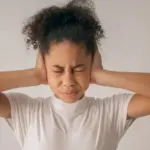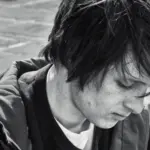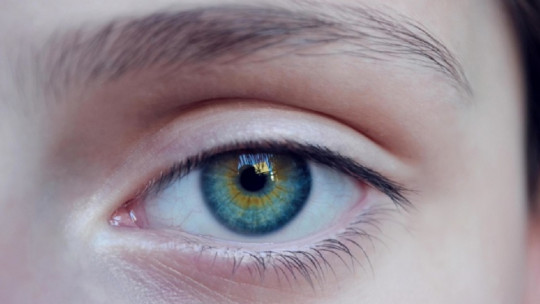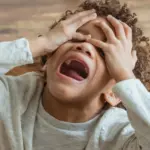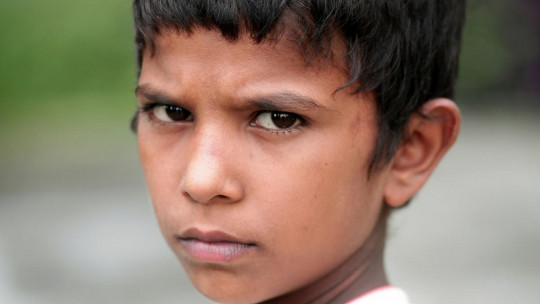
Know the anxiety disorders that occur in childhood It is very important, given the delicate stage of life that minors go through.
In this article we will see what disorders of this type are and how they can be treated.
Types of anxiety disorders in children
Children and adolescents, like adults, can present symptoms of anxiety and, despite the similarities, the consequences can be more harmful since the risk of affecting their socio-emotional development and even become chronic, becoming a more severe pathology.
That is why it is important to detect any signs of anxiety during childhood early. Some situations such as changing schools, moving to high school, the birth of a sibling, the separation of parents, the loss of a family member or moving to another city, can cause anxiety to appear. On the other hand, generalized anxiety disorder has a higher incidence, but separation anxiety disorder is very common and specific in children.
Anxiety disorders that appear during childhood They can be classified into the following categories.
1. Generalized anxiety disorder (GAD)
Generalized anxiety disorder is defined clinically, in both children and adults, as an exacerbated worry that is difficult to control In many situations, be present most days for at least six months.
According to the DSM IV Manual of Psychiatry, anxiety is associated with three or more of the following symptoms: restlessness or impatience, easy fatigue, difficulty concentrating or going blank, irritability, muscle tension, and sleep disturbances.
Anxiety affects parents and child harming their school performance and social relationships, and concerns can encompass numerous situations: school or sports performance, social approval, personal competence, etc.
Children and adolescents who suffer from this disorder tend to be conformist, perfectionist and insecure about themselves, and anxiety can be accompanied by headache and muscle pain nausea, diarrhea, irritable bowel syndrome and other symptoms of physical discomfort.
2. Separation anxiety disorder (SAD)
During childhood it is common to feel anxiety when separating from attachment figures. Normally this fear appears at six months and intensifies at two years, responding to an adaptive need since it constitutes a protection mechanism against dangers of the environment. However, if the anxiety is disproportionate based on the child’s evolutionary development and/or affects its functioning, we may be dealing with separation anxiety disorder.
It is the most common anxiety disorder in children under 12 years of age and of earliest onset, suffering from it around 4% of boys and girls and 1.6% of adolescents The presence of this pathology decreases with age, but the concerns of those who suffer from it also change. Thus, adolescents with separation anxiety disorder express more catastrophic concerns, for example, accidents, kidnappings, or the death of the attachment figure.
For the clinical diagnosis of SAD, it is necessary that the child or adolescent suffers three or more of the following symptoms: excessive anxiety about separation or its anticipation, excessive concern about the loss or well-being of attachment figures, opposition to leaving home, opposition to being alone, opposition to sleeping away from attachment figures nightmares about separation and complaints of physical discomfort (headache or stomach pain, nausea or vomiting, etc.) when the separation occurs or is anticipated.
What processes are involved in the appearance and maintenance of SAD?
Learning deficits, that is, the scarcity of separations, prevent the child from getting used to being without parents To eliminate the fear of separation, it is necessary to gradually increase the frequency and duration of experiences in which the child is away from attachment figures. Therefore, if the child is not exposed to these situations in a natural environment, the fear may persist.
Traumatic or unexpected separation experiences such as parental divorce, schooling, the hospitalization of an attachment figure, or the death of a close person, can also give rise to anxiety and even trigger the disorder.
Finally, positive reinforcement is one of the factors that most influences the appearance and maintenance of the disorder. If father figures reward excessive attachment and dependency behaviors the child will associate them with the reward received, whether it be attention or the simple presence of the parents.
Treatment of anxiety disorders in childhood
Since an anxiety disorder can disable the functioning of those who suffer from it in the short and long term, it is necessary to intervene as soon as possible and not be guided by the thought that it is a phase or that it will go away on its own.
In the case of childhood anxiety, according to the Society of Clinical Child and Adolescent Psychology of the APA (American Psychiatric Association), the best established treatment is cognitive behavioral therapy, which should be the first therapeutic choice. Its effectiveness has been demonstrated in individual treatments with the child and parents and in group treatments in the family and school environment. Specifically, the three most used procedures are exposure, cognitive techniques and relaxation.
On the one hand, gradual exposure, live or in imagination is the main component of cognitive-behavioral therapy.
Training in self-instructions also constitutes a fundamental part of the therapy, and consists of modifying the child’s internal verbalizations to replace them with others that allow them to cope with anxiety.
Regarding relaxation, the most used method is progressive relaxation, according to which reducing body tension It will relieve subjective feelings of anxiety. It is also a coping strategy that will help the young person keep anxiety at sustainable levels.
Intervention programs for parents and children
Furthermore, in recent decades, several programs focused on parents and children have been developed, the objective of which is to Prevent and treat specific childhood anxiety disorders
The “Coping Cat” or El Gato Valiente guide is especially useful for teach parents to educate without overprotecting and to promote the child’s autonomy. It consists of a program divided into two phases in which on the one hand we work with the parents and on the other hand individual sessions are carried out with the child addressing tasks such as psychoeducation, relaxation, exposure, cognitive restructuring, problem solving and self-control.
We can also meet the FRIENDS program, divided into four versions according to the age of the child and the FORTIUS program which, based on the Olympic motto “Citius, Altius, Fortius” (faster, higher, stronger), teaches children from 8 to 12 years old to face difficult situations and control negative emotions.
These programs based on cognitive-behavioral therapy are adapted to the peculiarities of children and adolescents and the characteristics of behavioral disorders at those ages, something that greatly benefits the child population.

